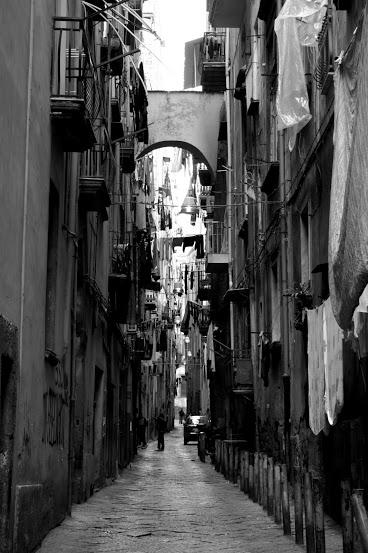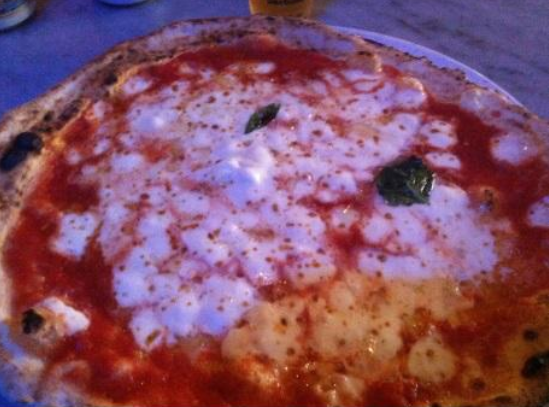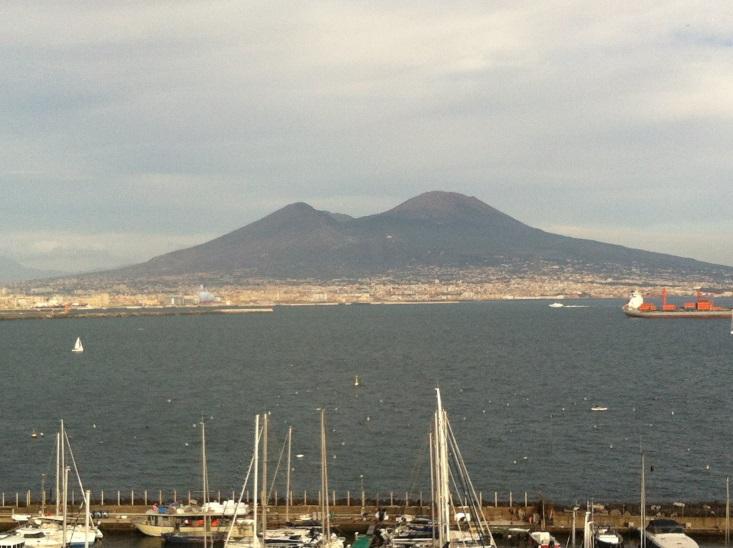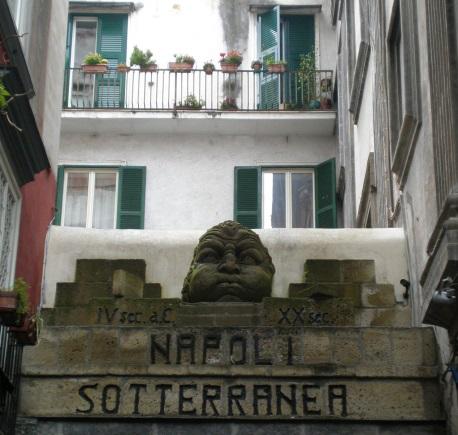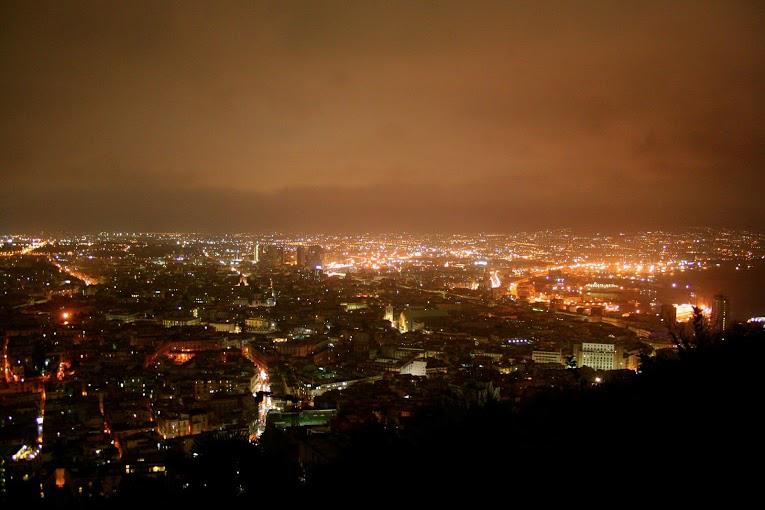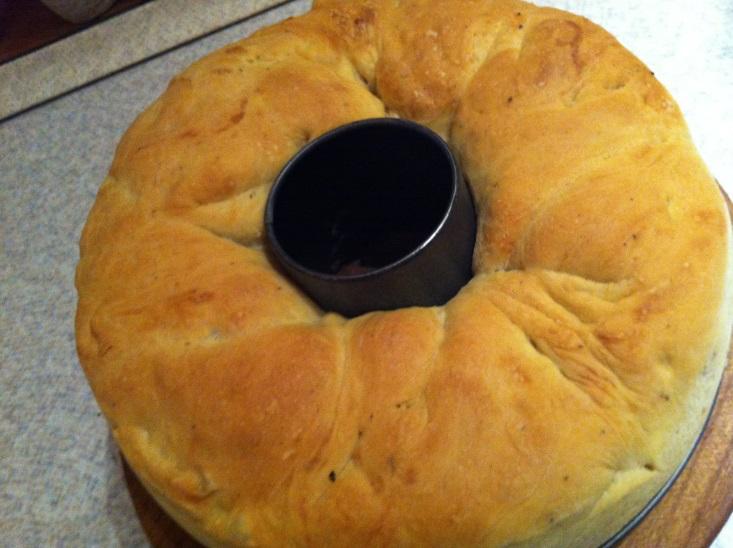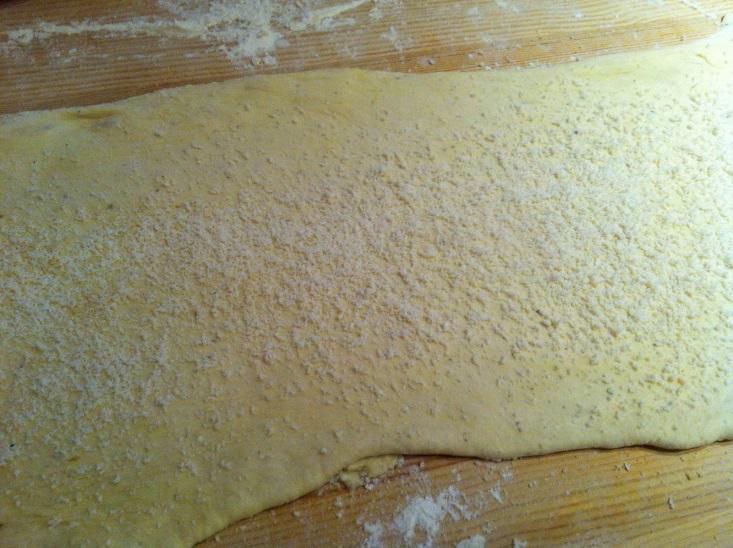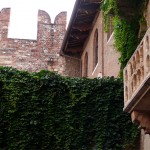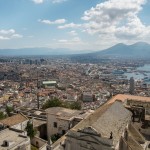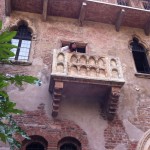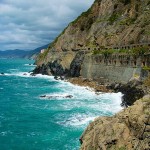No matter what, Verona is first of all the city of Romeo and Juliet!
Two days to fall in love with Naples
Why Italian people say “See Naples and die”!
by Federica Cagnoni
One may write or paint as much as one likes, but this place, the shore, the Gulf, Vesuvius, the citadels, the villas, everything defies description (J. W. Goethe, Italian Journey)
Day 1
I get off the train on Friday morning and it’s sunny… I leave all my bags in the B&B and run out for a first sightseeing of the city. I’m very close to the historical centre. I start my tour from Via dei Tribunali, a long street with several Gothic, Renaissance and Baroque churches that ends just in front of Castel Capuano, the Hall of Justice. Another important street of the city centre is the famous Spaccanapoli, so called because it divides Naples into two parts. Soon I’m walking along Via Toledo. That’s the street where you can find a lot of shops, but also important administrative buildings. Moreover, it is very close to the Quartieri Spagnoli, the very picturesque part of the city. Finally I end up in Via San Gregorio Armeno: one of the most ancient streets, where artisans are still producing statuettes for the Nativity scene, but not only that… if you pay attention you can also find something more contemporary!
It’s lunch time and a crowd in the middle of the street draws my attention… I find out there’s a pizzeria.. so I decide that it’s time for me to taste my first pizza, the original Italian pizza! The waitress takes note of my name and says I’ll probably have to wait a couple of hours. Sorbillo is not a fast food, actually it’s one of the best place where you can taste pizza in Naples, but there are too many people waiting for a seat… Finally pizza is served!
I have not seen the volcano yet, so I decide to go ahead. I pass Teatro San Carlo and I enter Galleria Umberto. I have reached Piazza del Plebiscito. From here I walk along the shore and there it is: the Vesuvius. Today it’s not cloudy, therefore it’s possible to see it very well. It seems very close to us. If you go on walking you will find the Maschio Angioino, the most important civil Angevin and Aragon castle of the city, and Castel dell’Ovo, which derives its name from the shape of the island and from the legend of an enchanted egg left here by Virgilius. Castel dell’Ovo is a sort of fortress, an ancient town enclosed by defensive walls.
I can take the underground to go back to the B&B, but I prefer to walk and find out more about the city that has been fascinating me so much. Naples seems strange because of its two different cores: an old one and a modern one, that is much more elegant. I prefer the former one, of course… I think it’s the soul of the city!
Day 2
On Saturday morning I get up and the weather is not so good… it’s rainy, windy and cloudy. But never mind, there are a lot of things to do anyway. Before going out, I have breakfast in the B&B, where our host is used to prepare a lot of cakes for her guests: carrot cake, bitter orange jam tart, lemon cake, coffee plum cake and… the pastiera napoletana of course!
First of all, walking along Via dei Tribunali, I approach the Cappella Sansevero, founded in 1590 and renovated in the 18th century, when the vault was completely painted and filled with statues to celebrate the virtues of the family’s maidens. In the mid of the nave there is the Veiled Christ sculpture. It’s something really astonishing because the veil and the joints of the hands and feet look so real that you cannot say whether it’s just a statue or a human body.
Soon after we walk back to Via dei Tribunali, where the tour to the underground city starts. We spend two hours wandering in a network of tunnels, which was opened at the beginning of the 20th century in order to extract materials from buildings (such as tuff) and to build aqueducts and galleries that would serve as refuges during the World Wars. Before the end of the tour, they bring us into private houses and old shops in order to see parts of an ancient Roman theatre that have been assembled into the new buildings.
It’s lunch time and we resurface to the day light… we have just visited a basso, a kind of apartment whose entrance is right on the street and in which poor people used to live. And you can still taste the pizza fritta these people used to eat in the street shops for few euros…
In the afternoon we take part in a guided tour of the Monastery of Santa Chiara. The cloister is decorated with majolicas. The colors are predominantly yellow, green and light blue, which remind us of the sky, the vineyard and the lemon trees that grow all around it. At the end of the tour you can see an example of the Nativity scene that is very common in Naples: people start working at it in May, so that it will be ready for the following Christmas.
We go back to Via Toledo and we decide to reach by cable railway the upper part of the city: the Vomero district. It was founded in the 19th century and it is characterized by great elegant buildings, although it is said that it has lost the idyllic character it had. We walk around the Castel Sant’Elmo but we cannot enter because it’s closing. We will come back, but in the meantime we take advantage of the wonderful view in front of us: Naples is there, under our feet, in all its grandeur.
A recipe
One of the typical dishes in the Easter period, the casatiello:
INGREDIENTS
For the dough:
- 1 kg 00 flour + a little bit extra to roll the dough;
- 120 g margarine because you cannot find lard so easily (the hostess told me “don’t use lard if you don’t know where it comes from”);
- 1 cube fresh yeast;
- 350 ml warm water;
- 10 g salt;
- pepper;
- 2 teaspoon sugar.
For the filling:
- 40 g grated Parmesan cheese;
- 100 g pecorino cheese;
- 100 g provolone cheese;
- 100 g ham or speck;
- 1 boiled egg.
Pour the flour into a bowl together with the yeast, the pepper and the margarine. Salt the warm water and pour it into the bowl. Mix everything together until you get a smooth and homogeneous mixture. Then pour it into a baking pan, previously greased with margarine. Bake it in the oven for at least two hours. Remember to put inside also a cup of boiled water in order to raise a bit the temperature. When it has grown to twice its size, sprinkle a bit of flour on the pastry and roll out the dough thin and even.
Fill it with Parmesan cheese, cubes of pecorino and provola, ham and pieces of boiled egg. Close it with the dough left and put it in the cooking pan, previously greased with margarine. Leave it in the oven for 2 hours. It rises after 40 minutes cooking at 180°.
Buon appetito!
Cover pic courtesy of Flickr User Robert Pittman
Visit Naples: helpful hints
Italian name: Napoli
Arrival
Naples has its own international airport, connected to the city centre by a bus (it takes 15 minutes and it costs 5€). For transcontinental flights you have to stop in other airports, Rome is the closest one.
Transports
In Naples you find both buses, subways and funicular. The ticket is the same for all the transports and it costs 1,5€. For more information check the ANM website. If you prefer to visit the city on foot, here you can find an idea for you tour.
What to do
Naples is the capital city of Campania region, in Southern Italy. Naples is on a beautiful Gulf, extended from the Sorrento Peninsula to the volcaninc area called Phlegrean Fields, on the background the huge Vesuvius, one of the two active volcanoes in Italy. In the Gulf, three famous islands – Capri, Ischia and Procida. The historical centre of Naples is listed as a UNESCO World Heritage Site since 1995, the most important monuments are the Dome, Palazzo Reale and the Maschio Angioino.
Speaking of food, Naples is the city where Pizza is born!
Where to sleep
The best place to sleep in Naples is of course the city centre. Other very good alternatives are Posilippo and Vomero area, the harbor and the University area, the boardwalk and the more expensive Chiaia area.

